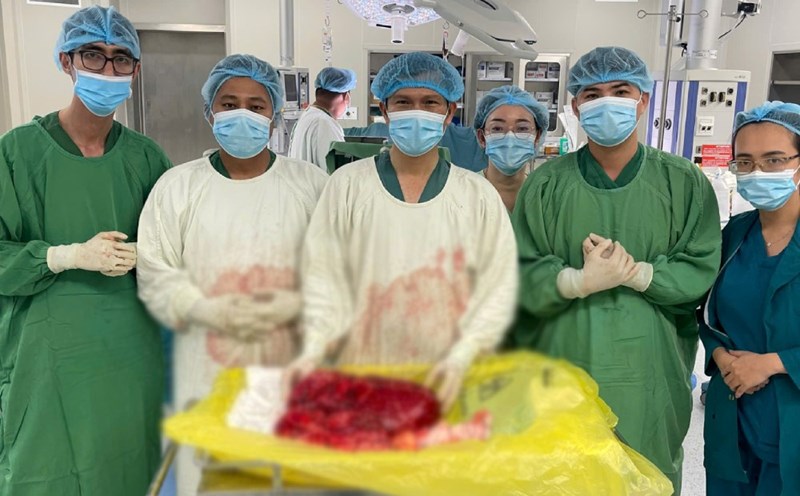Patient T.H.A. (13 years old, living in Ho Chi Minh City) has a small, skinny spot on his cheek, next to his right nose. Initially, with only a toothpick, the mass gradually grew over time, became dark black, bounced high off the skin and looked like a mulberry, easily bleeding and burning, causing her to often scratch because of itching and discomfort.
According to Ms. N.T.T. (mother of the patient), at first the family thought it was just a common acne, so they bought topical medication on their own, which was ineffective. Despite the increasingly serious damage, the child was still afraid of going to the hospital and pain, so treatment was delayed. By the third week, the tumor developed rapidly, affecting cosmetics and daily activities, forcing the family to take the child to the hospital.
Through examination, MSc. Dr. Huynh Cong Tri - Dermatology - Skin Aesthetics Specialist, Tam Anh General Hospital, Ho Chi Minh City, recorded a tumor with a diameter of about 1cm, 1.5 - 2cm high, the surrounding skin was swollen, secretion, and pain when touched. Software ultrasound shows increased blood irrigation and surrounding tissue edema - a typical sign of fecal seed tumors.
Dr. Tri says: Pette U is a benign skin lesion, formed by the abnormal increase in capillaries under the skin. However, due to the structure of rich blood vessels, this type of tumor is very likely to bleed and become infected if scratched or treated incorrectly".
Although the doctor explained that this was a simple procedure, causing numbness and no pain, the child was still scared and left in the middle of the examination. It was not until the third time, after being consulted by the doctor many times over the phone, that the patient agreed to return for treatment.
The procedure to remove the entire tumor is performed for 30 minutes. The child was discharged during the day and only felt a slight attraction when given the anesthetic. Biological results confirmed that this was a benign pustular tumor.
Doctor Tri warned: Many people confuse seed tumors with conventional acne, self-treating them makes the condition worse. Some malignant tumors also start from small tanks such as base cell carcinoma, scabies, or malignant hectares".
Doctor Tri recommends: when a strange acne or abnormal rash appears, the patient should see a dermatologist as soon as possible. Precise diagnosis through biochemistry helps distinguish between healthy and malicious tumors, avoiding dangerous complications such as infections, necrosis or permanent scars.











